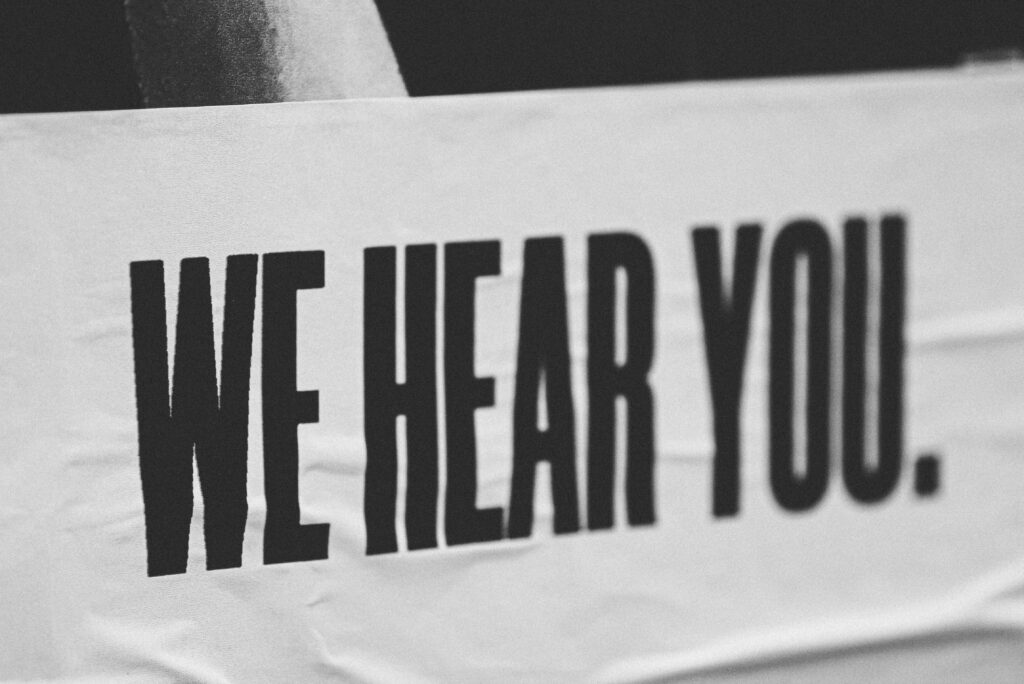behavior
What We Attend To Controls Our Behavior

Photo by Husna Miskandar on Unsplash
The statement “what we attend to controls our behavior” underscores the influential role of attention in shaping our actions, decisions, and even our identity. In an era replete with stimuli – from buzzing smartphones to ubiquitous advertisements – it’s more crucial than ever to understand how the direction of our attention impacts our behavior. It brings to mind Viktor Frankl’s famous quote, “Between stimulus and response, there is a space. In that space is our power to choose our response. In our response lies our growth and our freedom.”
Let’s dig into the deeper meaning of the statement and Mr. Frankl’s quote.
1. The Neuroscience of Attention
To appreciate the statement, beginning at the neurological level is vital. The brain is a processing powerhouse, constantly inundated with information from our surroundings. However, it cannot process all the stimuli in our environment equally. Attention serves as a spotlight, highlighting certain information for deeper processing while relegating others to the background. The prefrontal cortex, often regarded as the command center, is pivotal in guiding this spotlight. Once a particular stimulus is given prominence through attention, it becomes integrated into our thought processes, emotions, and decision-making mechanisms. By choosing where to focus, we determine which inputs will influence our subsequent behaviors. Choose wisely. Be intentional.
2. Habit Formation and Reinforcement
What we repeatedly attend to can become a habitual pattern. For instance, if individuals consistently pay attention to negative news, they might develop a pessimistic worldview over time. This pattern, once entrenched, drives behaviors aligned with that mindset, such as avoiding new experiences or constantly expecting the worst outcomes. The brain’s reward system reinforces such behavioral outcomes. Dopamine, a neurotransmitter linked with pleasure and reward, strengthens neural pathways associated with habits. Thus, the more we attend to certain stimuli, the more our brain reinforces the behavior associated with it.
3. The Role of Modern Technology
Understanding the link between attention and behavior is even more pertinent in the digital age. Technology companies often employ attention engineers who utilize principles from psychology to design apps and platforms that captivate users. Think: The Social Dilemma. By understanding what draws our attention, these platforms can guide our behavior, sometimes leading us to spend hours scrolling through feeds or watching videos. This impacts how we allocate our time and shapes our beliefs, values, and perceptions, as the content we attend to can influence our worldview.
4. Emotional Regulation and Focus
Emotions play a profound role in guiding behavior. The stimuli we attend to can dictate our emotional responses. Focusing on the challenges and setbacks they encounter makes them more likely to experience feelings of frustration, sadness, or anxiety. Conversely, directing attention towards positive aspects, such as achievements or moments of joy, fosters positive emotions. Over time, this pattern of attention can influence behavior, promoting resilience and a proactive attitude in the face of adversity.
5. The Power of Mindfulness
Recognizing the nexus between attention and behavior has also led to the popularizing of practices like mindfulness. Mindfulness teaches individuals to control their attention, anchoring it to the present moment. By consciously directing focus, one can break free from detrimental cycles of behavior. For instance, someone struggling with anxiety might learn to shift their attention away from ruminative thoughts, leading to better emotional regulation and healthier behavioral responses.
6. Implications for Personal Development
At a personal level, understanding that “what we attend to controls our behavior” can be empowering. It suggests that curating the content and experiences we focus on can drive positive change in our lives. Whether engaging with uplifting content, seeking environments that promote growth, or practicing techniques to guide our attention, there’s a wealth of opportunity to harness this principle for personal development.
To sum this up, the adage “what we attend to controls our behavior” encapsulates a profound truth about the human experience. Our attention is a filter, shaping our perceptions, emotions, and decisions. In the present day, with its plethora of distractions, it’s essential to recognize the potency of our focus and strive to direct it wisely. Only then can we ensure that our behaviors align with our aspirations and values.
Share this:
The Power of Emotions: How Feelings Influence Your Actions

Photo by Domingo Alvarez E on Unsplash
Emotions are an integral part of the human experience, shaping how we perceive the world around us and influencing our choices. They are powerful forces that drive our actions and reactions, often without realizing it. In this time, we will explore the role feelings play in our behavior and how self-awareness and emotional intelligence can help us harness the power of emotions to improve our personal and professional lives.
First, let’s define what emotions are. Emotions are complex psychological states involving thoughts, physical sensations, and behavioral responses. Various internal and external factors, such as thoughts, memories, or external stimuli, trigger them. Emotions can be categorized into positive (e.g., happiness, excitement) and negative (e.g., sadness, anger) emotions, each serving different functions and influencing our behavior differently.
Emotions act as key drivers in our decision-making processes. Neuroscience research has shown that emotions play a significant role in decision-making, and individuals with damage to the emotional centers of their brain struggle with making decisions, even simple ones. Our emotions often serve as a quick and efficient way to evaluate situations and guide our actions.
For instance, fear can help us avoid danger, while happiness can motivate us to pursue activities that bring us joy. When we experience strong emotions, our brains release chemicals such as dopamine, serotonin, and cortisol, which can directly impact our motivation and subsequent actions.
However, emotions can also lead us astray, causing us to make impulsive decisions or engage in destructive behaviors. For example, anger can lead to aggressive behavior or cloud our judgment, while sadness can result in feelings of helplessness or inaction.
To harness the power of emotions and ensure they serve us well, it’s essential to develop self-awareness and emotional intelligence. Self-awareness involves being conscious of our emotions, understanding their triggers, and recognizing how they influence our thoughts and actions. Emotional intelligence refers to the ability to perceive, understand, and manage not only our own emotions but also the emotions of others.
Here are some strategies to help you develop self-awareness and emotional intelligence:
- Practice mindfulness: Pay attention to your thoughts, feelings, and bodily sensations without judgment. This can help you identify patterns in your emotional responses and better understand your emotional triggers. I use Sam Harris’ Waking Up app for my daily practice.
- Reflect on your emotions: Journaling or discussing your feelings with a trusted friend or therapist can help you gain insights into your emotional landscape. Code & Quill is my go to notebook for journaling.
- Develop empathy: Put yourself in others’ shoes and try to understand their emotions and perspectives. This will not only help you manage your own emotions better but also improve your interpersonal relationships.
- Learn emotional regulation techniques: These can include deep breathing, meditation, or cognitive reframing, which help you manage intense emotions and respond in a more constructive manner.
- Seek professional help: If you struggle with emotional management, consider working with a mental health professional who can provide guidance and support. Professional counselors are worth every dime.
Share this:
SBI Feedback Model

Photo by Jon Tyson on Unsplash
Have you ever experienced the anxiety-inducing feeling of butterflies in your stomach before a “moment of truth” conversation with a team member? This feeling is as common as an eight-year-old child dribbling and shooting a basketball with their non-dominant hand. In professional and personal settings, the Situation-Behavior-Impact (SBI) feedback model is widely used as a framework for giving feedback. This model is based on the principle that effective feedback should include a specific description of the situation, feedback on the person’s behavior in that situation, and an explanation of the impact of that behavior.
Reflecting on my experience terminating a team member, I recall intense fear, shaking, sweating, and anxiety. And it gives me the ability to give you a few tips to help you navigate a “moment of truth” conversation.
The SBI model involves the following steps:
First, describe the situation, which provides a clear and specific context for the feedback. Second, provide feedback on the person’s behavior in the situation. This feedback should be specific and focused on observable behaviors. Finally, explain the impact of the person’s behavior on the situation or other people involved. This feedback should be objective and focus on the consequences of the behavior.
Once you complete the first conversation round, go through the model again. This time, replace the bad behavior in step two with the expected behavior and the bad consequence in step three with the new expected consequence.
Following the SBI model, feedback can be delivered in a constructive and non-threatening way.
By focusing on observable behaviors and their impact, the feedback can be specific, actionable, and focused on improving performance or relationships.
Share this:
Scaling Up Keystone
Location, Location, Location – real estate types know this aphorism better than most. It’s the key to any good transaction. Always buy property with your exit strategy in mind and location for certain is part of that thought process. But don’t forget about the equally if not more important piece of the equation.
People People People
As Mills Properties journeys down the road of Scaling Up; we are becoming more and more aware of having the right people in the right positions doing the right things. Not unlike purchasing property with the end in mind; it’s critical to hire and train the right people. Also, with a distant time in mind.
Hire For Attitude
A number of years ago – too many to count – I had the awesome pleasure of working for Equity Residential Properties. A company and people I will forever hold in esteem. They have a real penchant for hiring right. Their mantra at the time, hire for attitude and train for skill, governed the overall sourcing and hiring process. It worked.
Hire For Character
But I think hiring for character is a much more powerful governor than attitude. While attitude covers a person’s way of behaving; I think it’s easily rocked and completely open to the winds of change. Not a bad thing; just a bit less stable for what I believe is a keystone to business success. Whereas character is a much deeper sense of self as governed by a solid moral center; it is less affected by the downsides of adversity and the upsides of awesomeness.
Scaling Up
The keystone message: hire for character, train for character and coach out for lack of character.
Your looking forward to scaling up multifamily maniac,
M

